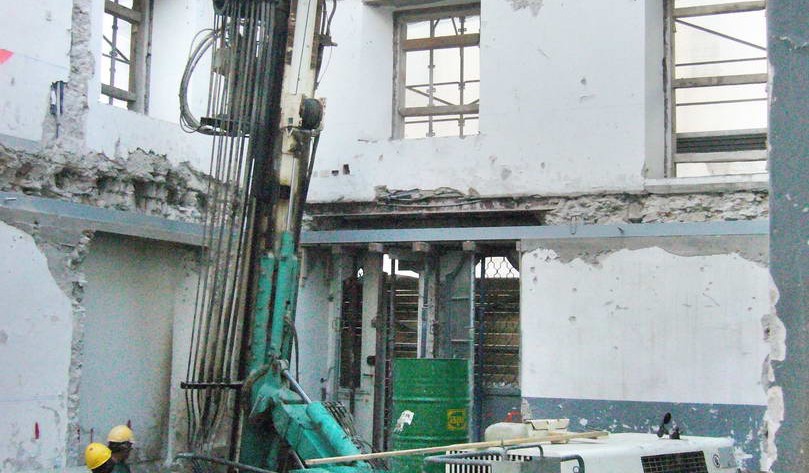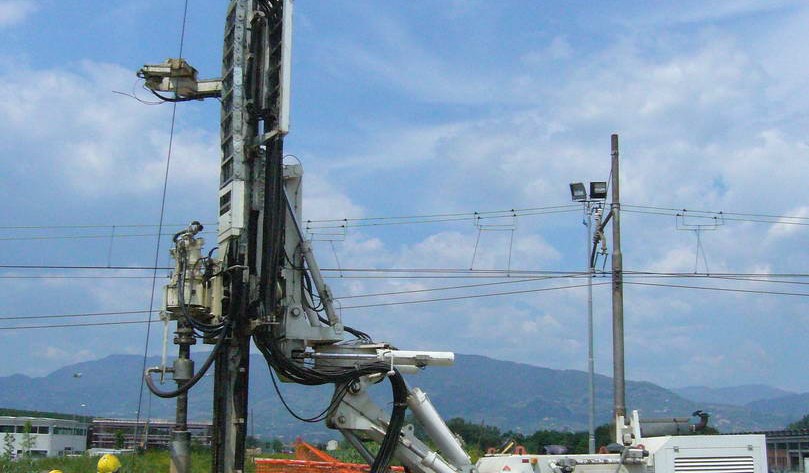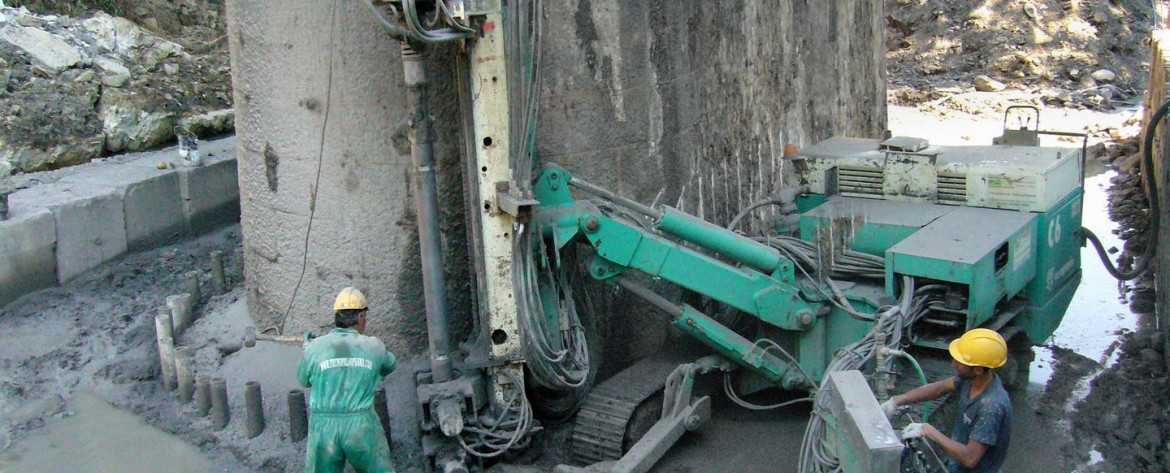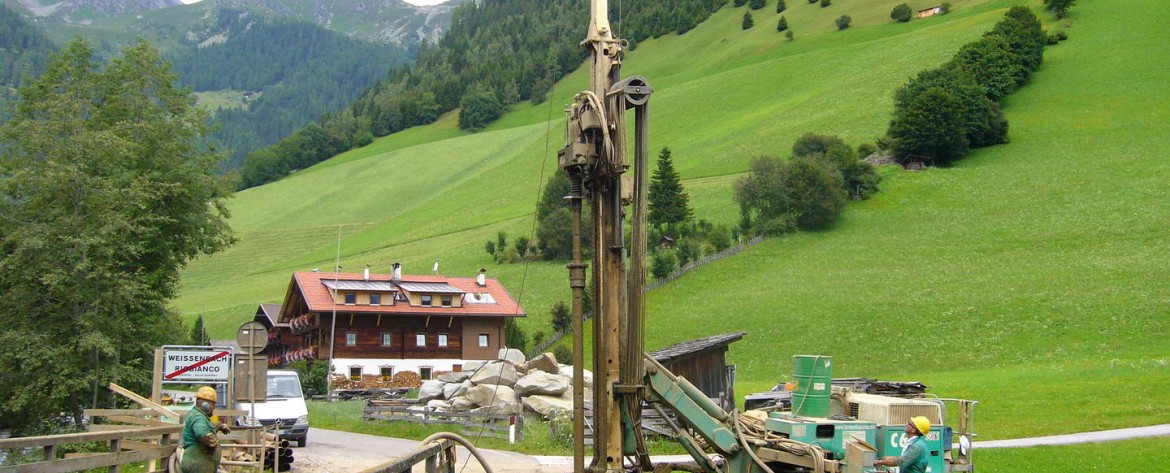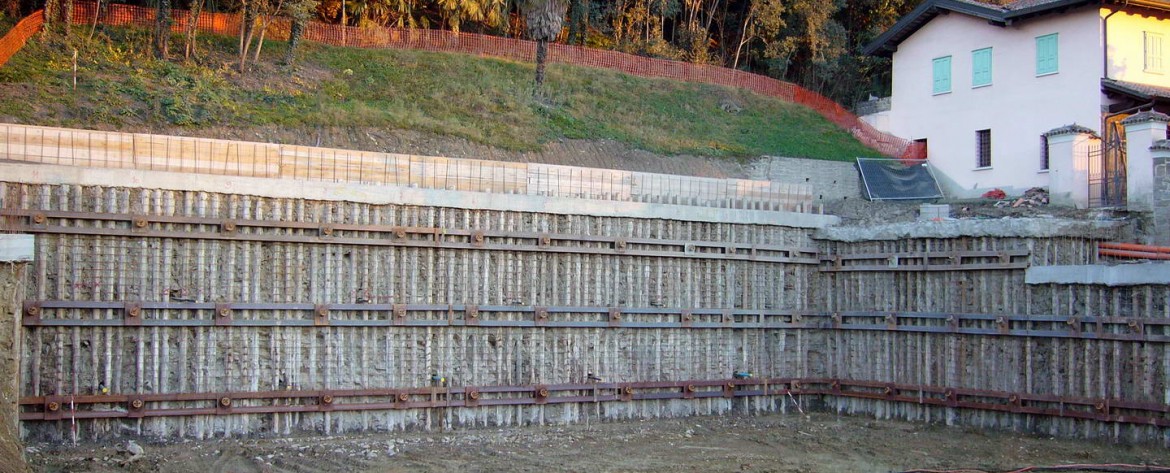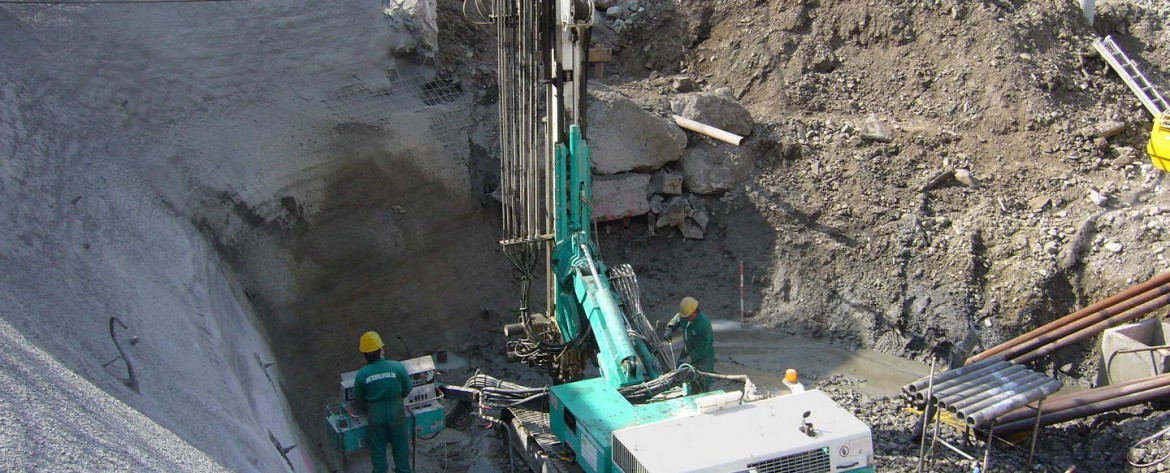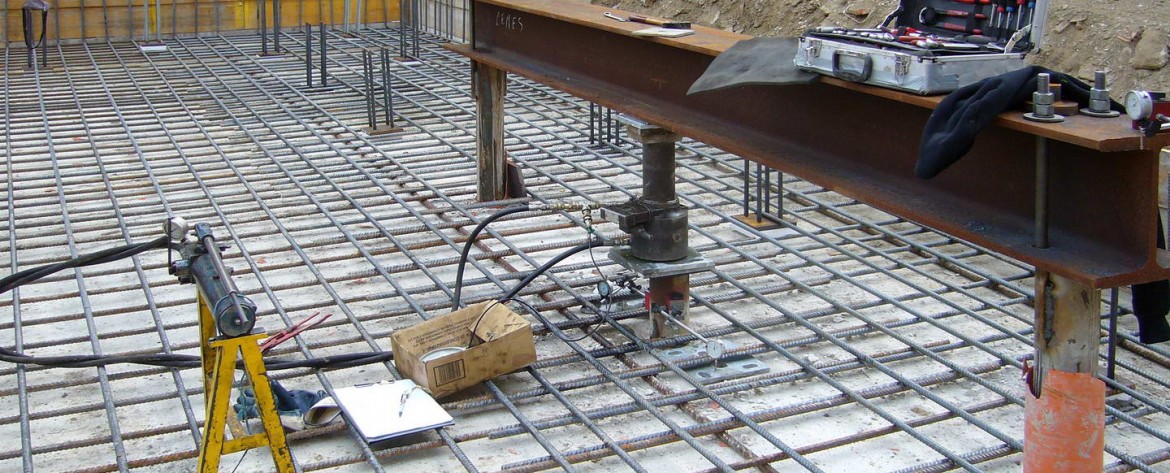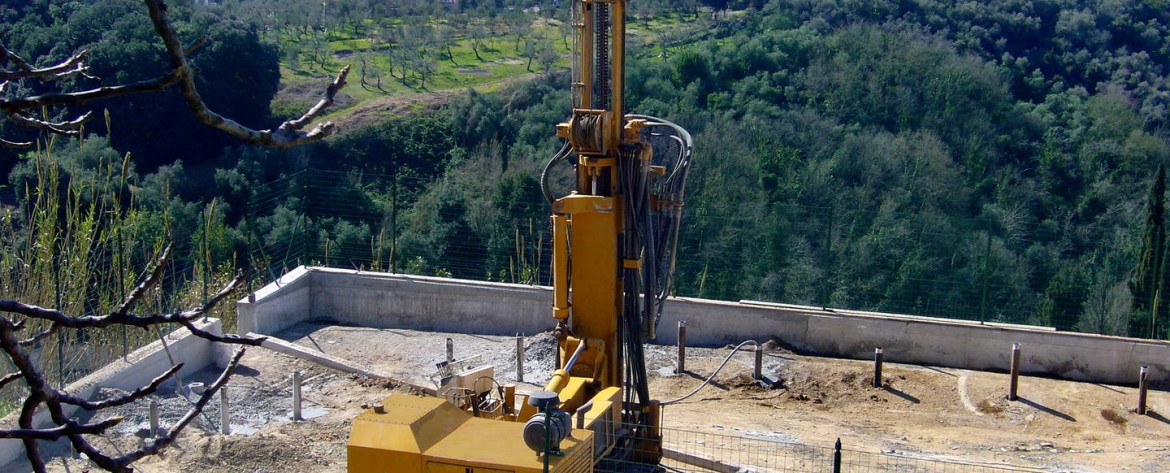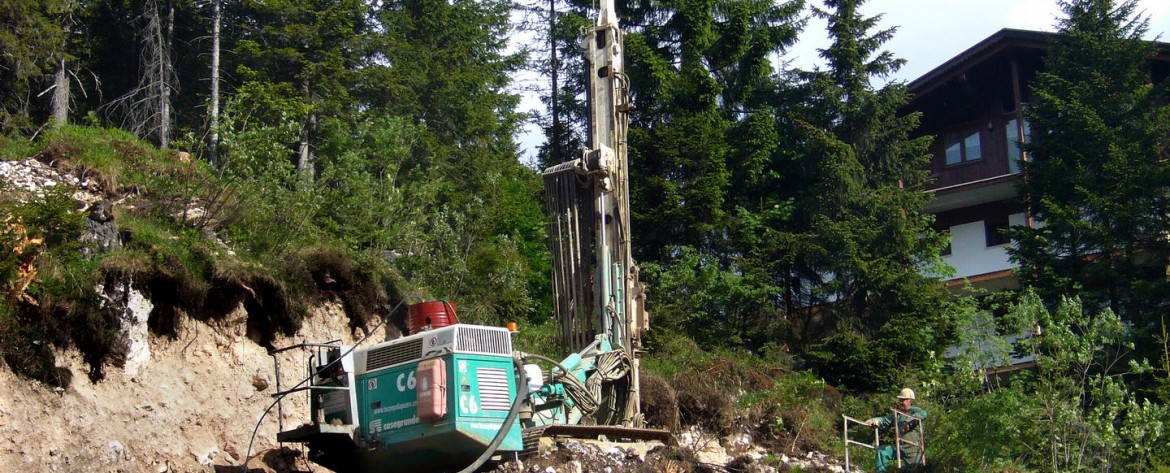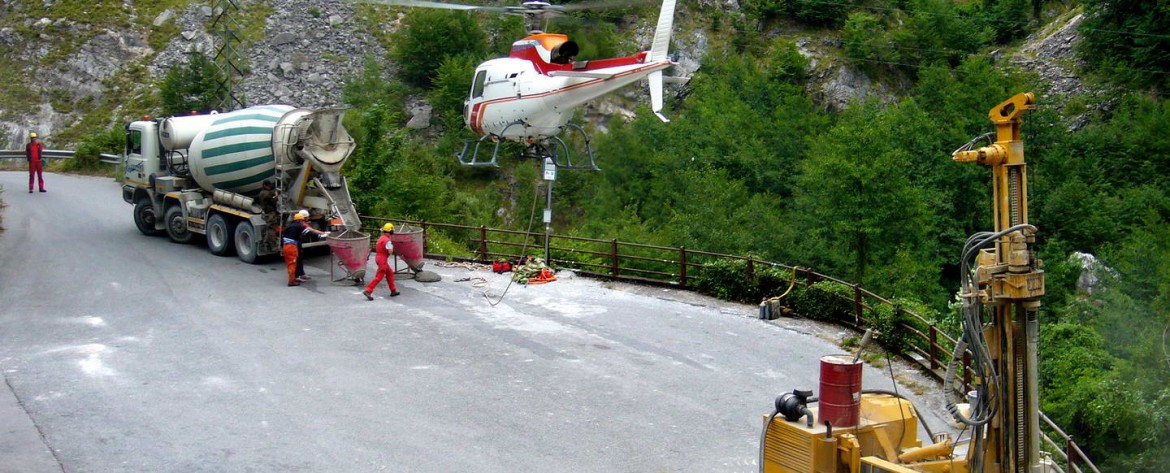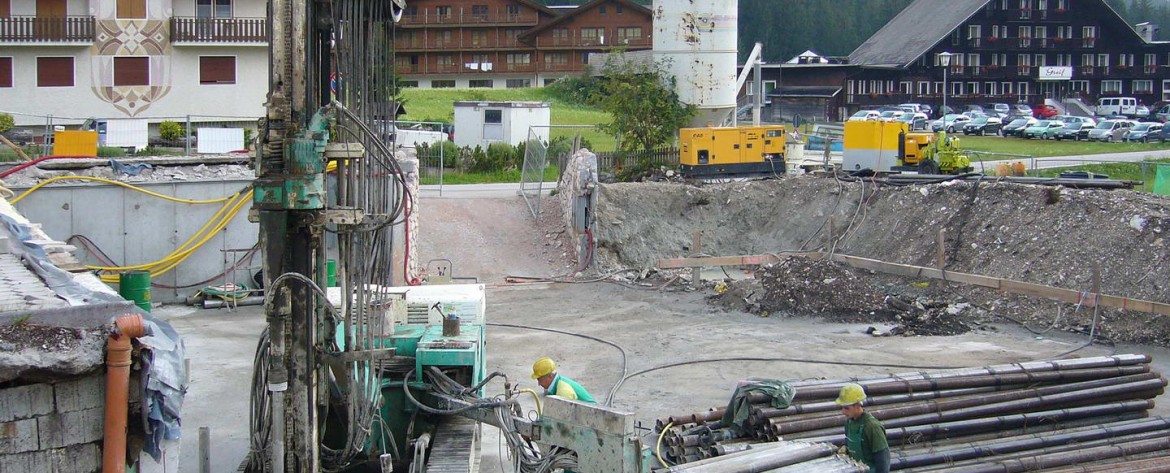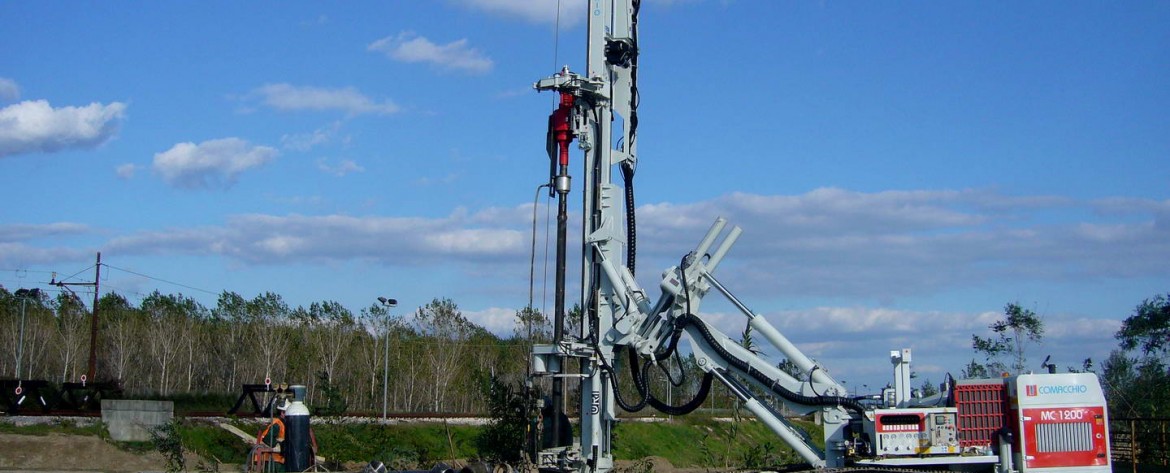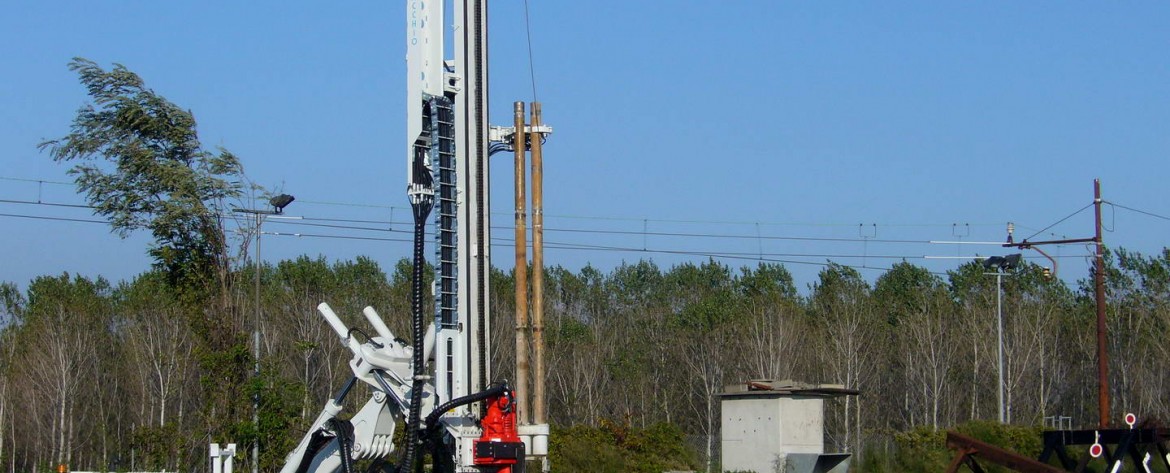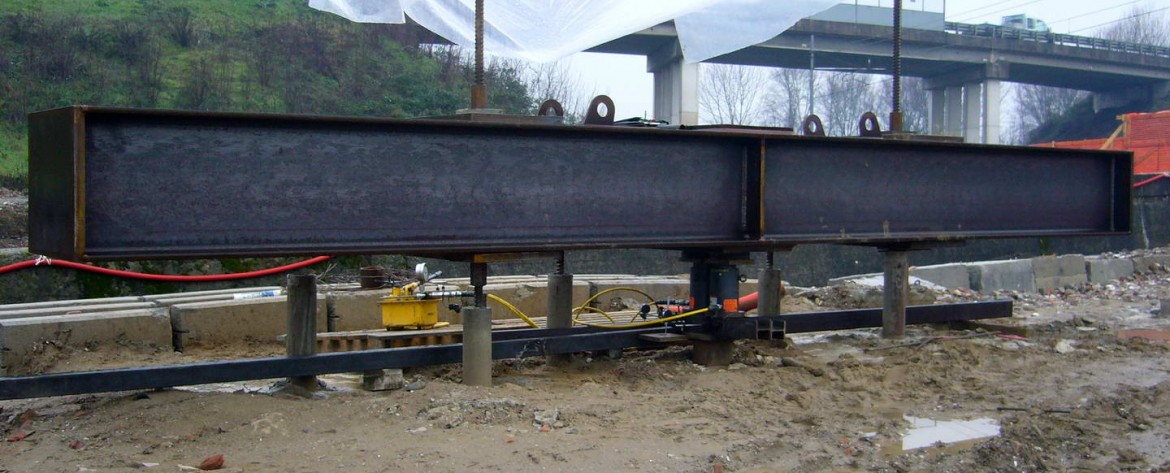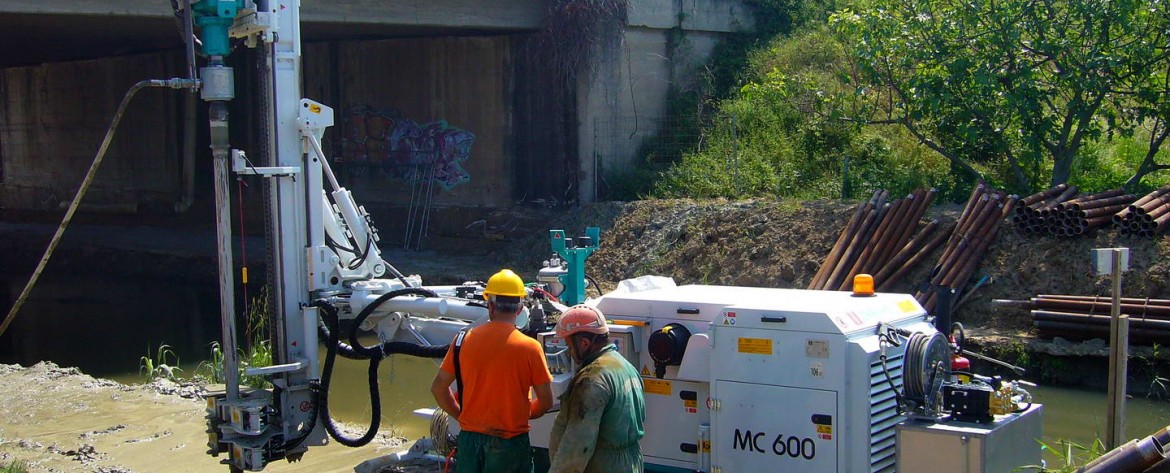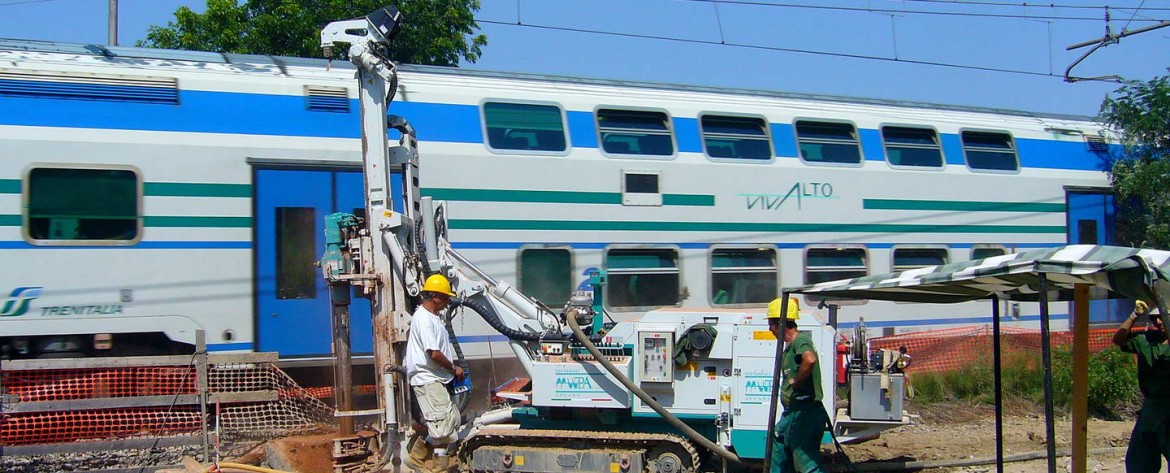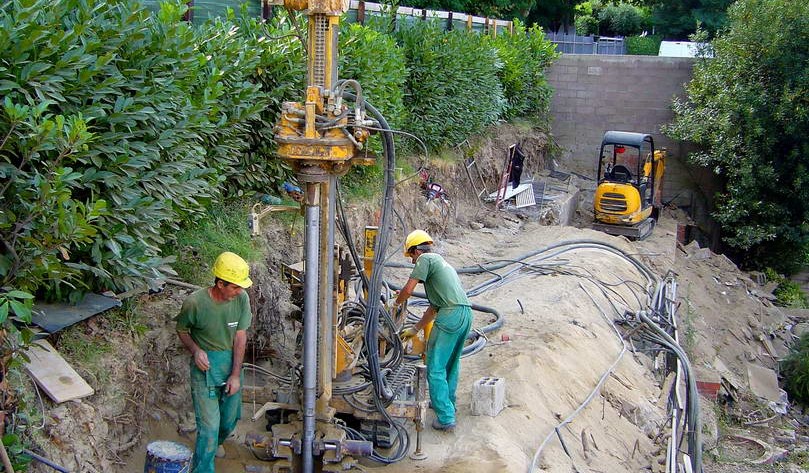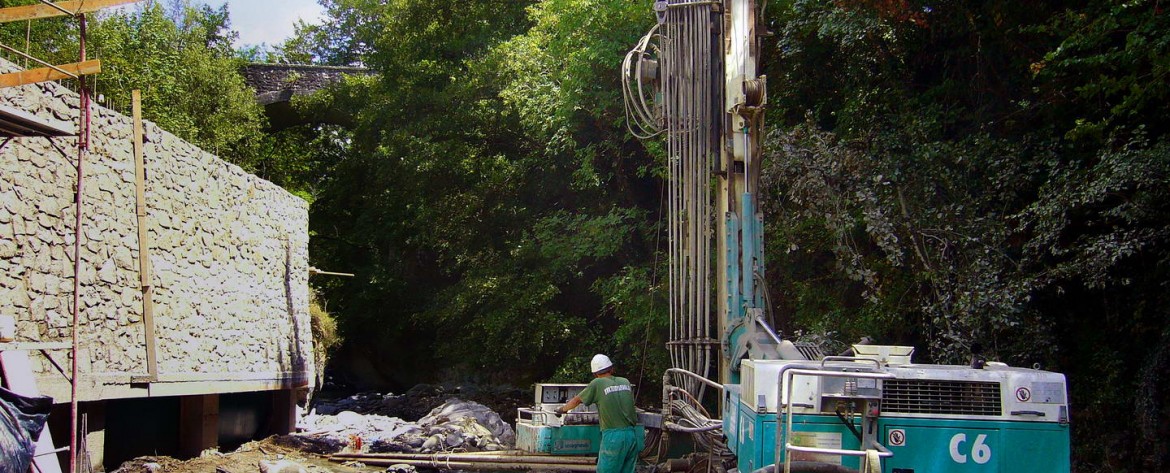Micropiles
Micropiles with small diameters of between 100 mm and 300 mm are installed using compact sized, hydraulic drilling equipment which can operate inclined as well as vertically. They contain a core steel element (metal reinforcement) for load transfer to deeper subsurface strata and reduce distortion. They can be installed in all soil types and in access-restricted environments and conditions of low headroom, including basements, underground locations or tunnels.
Depending on soil characteristics drilling can be carried out using dry or wet rotary methods with water or mud flushing, or rotary percussion drilling using air as the flushing medium with or without temporary casings.
Once the drilling has been completed, steel casing is installed, and subsequently concreted using mortar, grouts or cement-based mixtures. This operation can be carried out as follows :
– gravity grouting, grout placed under gravity head using the reinforcement tube as casing
– pressure grouting, using a metal reinforced sleeve-port grout pipe called a ‘tube à manchettes’ where the “manchettes” or check-valves are placed along the entire or partial length of the pipe. In this case grouting occurs in two phases: the first consists in filling the outer space between the pipe and the soil or rock. The second is a series of grout injections starting from the borehole bottom upwards in succession, with double check valves keeping pressure under control. This method allows for very high loading capacities even in difficult ground conditions not conducive to drilled shaft systems.
Micropiles are generally used for underpinning, consolidating and reinforcing existing or brand new structures, earth retention in excavation work and slope and landslide stabilizing.

